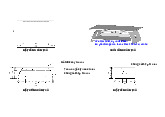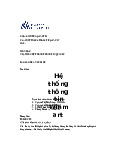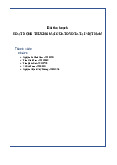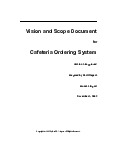



















Preview text:
Protection of the Environment and the
International Salvage Convention, 1989: An Assessment Eghosa O. Ekhator Abstract
This article focuses on the International Salvage Convention and the protection of
the environment in salvage operations. The article traces the evolution and history
of the law of Salvage to its present status by using the UK as a case study. In
essence, the article seeks to ascertain the extent of current international regime on
salvage in protecting the environment. The question that this article poses is: Does
the International Salvage Convention 1989 accord enough protection to the
environment against the backdrop of global efforts to promote environmental
protection and sustainable development? The article begins with a brief synopsis
of the underlying principles of salvage including the rule of ‘no cure-no pay’
followed by an appraisal of the events that culminated arguably in the development
of the International Salvage Convention 1989 to safeguard the environment in the
course of salvage operations. A systematic analysis of the defects inherent in the
International Salvage Convention 1989 vis-à-vis protection of the environment are
analysed and a number of reforms are highlighted. Key terms
International Salvage Convention, England, Environmental Protection, Pollution
and Environmental Salvage Award
DOI http://dx.doi.org/10.4314/mlr.v10i1.3 ______________ Introduction
This article focuses on the International Salvage Convention and the protection
of the environment in salvage operations. The article traces the evolution and
history of the law of Salvage to its present status, and it uses the UK as a case
study. The article seeks to ascertain the extent of current international regime on
salvage in protecting the environment. The first section focuses on the history
and evolution of salvage. The modern concept of salvage which can traced to
the United Kingdom (hereinafter ‘UK’),1 (especially England) hence the city of
Eghosa Osa Ekhator, PhD (Hull), LL.M (Hull), LL.B (Benin); barrister and solicitor of the Supreme Court of Nigeria.
1 The origins of salvage are ancient and existed in old legal systems such as the Roman
epoch amongst others. The Law of Salvage’s core principles were established in the
nineteenth century and the Admiralty Courts in England played major roles in the modern 73
74 MIZAN LAW REVIEW, Vol. 10, No.1 September 2016
London occupy special place in the international salvage paradigm. The second
section briefly discusses the subject matter of salvage. Definitions of terms such
as ‘vessel’, ‘ship’ or ‘maritime property’ will be elucidated upon. A major
reason for focusing on these definitions is to highlight the evolution of the
different meanings ascribed to these terms.
The third section highlights the three core elements of the law of salvage:
danger, voluntariness and success. Section 4 focuses on environmental
protection in salvage operations. Many salvage operations have had negative
impacts on the environment, thus, this section highlights the role of the
International Salvage Convention 19892 in protecting the environment. The fifth
section suggests some reforms to improve protection of the environment in the
international salvage paradigm. The article also considers if the development of
a separate environmental salvage award can be the panacea to some of the
weaknesses in environmental protection in salvage operations.
1. The History and Evolution of Salvage
Salvage is traditionally concerned with the salving or preservation of property in
peril at sea3 and it is unique to maritime law.4 If a person willingly rescues the
property of another person on land, he gets no reward. However, if the same
service is performed at sea, the person salving the maritime property, the
‘salvor’, will be entitled to a reward, not exceeding the value of the property
salved.5 Salvors are provided special incentives in addition to the compensation
development of the law of Salvage. Generally, see Olivia Lennox-King (2007) ‘Laying
the Mark to Port and Starboard: Salvage under duress and Economic duress at Contract
Law’ 21 Aust ralia n & N ew Zealan d Marit ime Law Jo urna l 31, 32; Catherine Swan (2009)
‘The Restitutionary and Economic Analyses of Salvage Law’ 23 Australian & New
Zealand Maritime Law Journa l 99. See also George F. Steckley (2014) ‘The Seventeenth-
Century Origins of Modern Salvage Law’ 35(3) The Journal of Legal History 209. Thus,
some scholars aver that the ‘first recorded salvage dispute dates from 1601’. See Yin-
Cheng Hsu (2016) ‘Developments in International Cultural Heritage Law: What Hampers
the Convention on the Protection of the Underwater Cultural Heritage.’ 3 Edinburgh
Student Law Review 116, p. 125.
2 International Convention on Salvage, 1989. Drafted by the Comite Maritime International
(CMI) under the auspices of the International Maritime Organisation (IMO). Also referred
to as the Salvage Convention 1989 or the London Salvage Convention. accessed 1 January 2015.
3 Geoffrey Brice (2003) Brice on Maritime Law of Salvage (4thedn, Sweet and Maxwell) 397. 4 Ibid.
5 Simon Baughen (2012) Shipping Law (5th edn, Routledge) p. 274. However, under Article
8(1) (c) and (d) of the 1989 Convention a salvor, in appropriate circumstances, is required
to seek assistance and accept the intervention of other salvors’.
Protection of the Environment and the International Salvage Convention, 1989 75
due to them because of the risks taken in coming to a distressed ship’s aid.
Kennedy defined salvage in the same vein.6 Brice7 defined salvage as a right which:
arises when a person acting as a volunteer (that is, without any pre – existing
contractual or other legal duty so to act) preserves or contributes to
preserving at sea any vessel, cargo, freight or other recognised subject of salvage from danger.8
In the law of salvage, no matter the efforts of the salvor, if the endeavour is
unsuccessful, no reward is given. This is the legal reasoning behind the ‘no
cure-no pay’ doctrine. According to Mandaraka-Sheppard, ‘the right to reward,
rather than remuneration, arises from the fact that salvage is a mixed question of
a private right and public policy’.9
The framework of the current law on salvage was first established by the
decisions of the Admiralty Court in the UK in the eighteenth and nineteenth
centuries.10 During this time, salvage was purely voluntary and more often than
not, ‘often non-contractual, rendered by ordinary ships that happened to be
passing the distressed ship.’11 Thus, prior to the end of the nineteenth century,
express salvage contracts were unknown.12
Presently, salvage is mainly performed by trained or professional salvors that
are usually contracted for their services. In the eighteenth and nineteenth
centuries, a unique form of contract – Lloyd’s Open Form (hereinafter ‘LOF’)
evolved and it coincided with the substantial usage of steamships and tugs.13
6 DW Steel and Rose FD (1985) Kennedy’s Law of Salvage (5thedn, Steven and Sons)p. 8.
7 Brice (2003) supra note 3, p. 1. 8 Ibid.
9 Aleka Mandaraka–Sheppard Modern Admiralty Law (1stedn, Cavendish) 650. According to
Richard Shaw & MikisTsimplis (2011) ‘The Liabilities of the Vessel’ in Yvonne Baatz
(ed), Maritime Law (2nd edn, Sweet & Maxwell 2011) pp. 250-251, who posit that the
public policy in salvage operations encompasses three elements –‘first, recognising that
such assistance entitles the salvors of the property to a salvage reward; second, that the
right to a salvage reward arises at the time of rendering assistance irrespective of any
contract; and third, that this right is protected by a maritime claim of the highest priority,
the salvage lien, and a right to arrest the salved property by an action in rem.’
10 Baughen, supra note 5, p. 275. 11 Ibid. 12 Id., p. 651.
13 The LOF is a type of contract that is widely used in the international salvage industry. It
contains the ‘No Cure-No Pay’ principle in salvage operations. The first LOF was
approved in 1892 and it has been used in the salvage industry for more than one hundred
years. Generally, the LOF provides for England as the appropriate forum for litigation
and London for arbitration. However, different types of salvage contracts exist in other
parts of the world, for example, China, Russia and Japan. See Graham Daines, (2002)
76 MIZAN LAW REVIEW, Vol. 10, No.1 September 2016
Salvage agreements became more common, and by the nineteenth century, a
Lloyd’s Form of Salvage Agreement ‘No Cure – No Pay’- (sometimes known as
‘Lloyd’s Standard Form’ or ‘Lloyd’s Open Form’) first came to be used, soon to
be superseded and improved during the course of the twentieth century,
culminating in ‘LOF 2000.’14 Furthermore, in 2011, the LOF underwent some
changes and this is reflected in LOF 2011.15 In The Un ique Marin er, Brandon J
said that the LOF contract has been judicially categorised as one for work or
labour which is only subject to the principles of Salvage law in so far as these
have been expressly or impliedly incorporated into it.16 Here, in non-contractual (implied) salvage,
The salvor and salvee owe only minimal duties towards one another. The
salvor owes a duty of care in respect of any services that it actually
performs, but it owes no duty to perform those services. It is free to cease
work at any time it chooses. ... The position is quite different with a
contractual salvor. … LOF imposes an additional duty on the salvor to use
its best endeavours to salve the ship and its cargo.17
The LOF is the most widely used ‘no cure – no pay’ salvage contract. Under a
LOF contract, in return for salvage services, the salvor receives a proportion of
the ‘salved value’ (the value of ship, its bunkers and cargo).18 A major
distinction between the LOF and the traditional principles of salvage is that
‘under the LOF, salvage is admitted, thereby obviating the need for the salvor to
show that the vessel was in danger at the time that the agreement was made.’19
As highlighted above, there have been various updates of the LOF culminating
in the LOF 2011. The LOF 1980 was the impetus for the development of the
1989 International Salvage Convention.20 The LOF contained provisions on
environmental risks and protection in salvage operations and these provisions
were added to the 1989 Convention. In essence, the LOF protects salvors from
the hazards or risks inherent in salvage operations by providing them with
incentives (such as financial incentives) to balance their losses.
‘Lloyd’s Open Form and Special Compensation P & I Clause (SCOPIC)’
20-%20Scopic%20Paper.pdf>. Accessed 10 February 2015. 14 Brice, supra note 3, p. 5.
15 Baughen, supra note 5. The changes inherent in the LOF 2011 will be analysed in a
subsequent section of this article.
16 The Unique Mariner (No 2) [1979] I Lloyd’s Rep 37.
17 Baughen, supra note 5, p. 294. 18 accessed 2 January 2015.
19 Baughen, supra note 5, p. 274. 20 Ibid.
Protection of the Environment and the International Salvage Convention, 1989 77
2. The Subject Matter of Salvage
Prior to the development of the International Salvage Convention 1989, the
subject matter of ‘salvage’ as found in English law was vague and ambiguous.
For example, section 742 of the 1894 Merchant Shipping Act (now abolished)21
defined a ‘vessel’ to ‘include any ship or boat, or any other description of vessel
used in navigation not propelled by oars.’ According to Mandaraka-Sheppard,
this definition was circular and she avers that the definition which entails ‘that a
vessel includes a ship and a ship includes a vessel does not help much by way of
definition’.22 Thus, this definition of a ship as encapsulated in the Merchant
Shipping Act 1894 was ambiguous and was subjected to diverse meanings or interpretations.
For example, in The Gas Float Whitton (No.2)23 this concerned a structure
that was shaped like a ship. The House of Lords held that the structure was not a
ship within the meaning of the Merchant Shipping Act 1894 and also that a
salvage reward is not available to any person in respect of anything that is not a
ship, part of a ship or cargo. Marsden criticised this judgment on the basis of it
not being in accordance with the practice of the Admiralty courts which had
prevailed for at least three centuries prior to the judgment.24 The decision in The
Gas Float Whitton (No. 2) is an example of the effect of ambiguity contained in
the definition of ‘vessel’ in the 1894 Merchant Shipping Act.
This definition of a vessel has been now discarded. The phrase ‘not propelled
by oars’ has been omitted from the definition of a ‘ship.’ It was removed by
virtue of the Merchant Shipping (Registration) Act 1993,25 enacted into the
Merchant Shipping Act 1995.26 Section 313(1) of the latter Act defines a ship to
include any vessel used in navigation. The International Salvage Convention
198927 defines a ship in Article 1(b) to include any ship, craft or any structure capable of navigation.
Other types of traditional maritime property that can be subject to salvage are
freight and cargo. Cargo is subject to salvage irrespective of whether it is owned
by a ship owner or by a third party or whether or not it is carried under a bill of
lading.28 In the Gas Float Whitton (No.2), cargo was held to qualify as a subject
21 The Merchant Shipping Act 1894.
22 Mandaraka-Sheppard, supra note 9, p. 15. 23 [1897] AC 339.
24 RG Marsden (1899) ‘Admiralty Droits and Salvage-Gas Float Whitton No. II’ L.Q.R 353, p. 354.
25 The Merchant Shipping (Registration) Act 1993.
26 Mandaraka-Sheppard, supra note 9. 27Supra note 2. 28 Baughen, supra note 5.
78 MIZAN LAW REVIEW, Vol. 10, No.1 September 2016
matter of salvage.29 Article 1(c) of the International Salvage Convention 1989
defines a maritime property as any property not permanently and intentionally
attached to the shoreline and includes freight at risk. This includes goods or
merchandise on ships but it is not inclusive of the personal effects of master (or
crew) and passengers. Article 1(c) of the International Salvage Convention30
makes freight subject to salvage. Freight is the remuneration due and payable
for the carriage of cargo and not hire for the use of ships.31 Also, ‘cargo adrift or
sunken ships’ (ship wrecks) is likewise subject to the law of Salvage.32
Non–maritime property can also be subject to the law of Salvage. Generally,
an aircraft cannot be termed a maritime property but it maybe entitled to salvage
under Section 87(1) of the Civil Aviation Act 1982.33 Similarly, this treatment is
also extended to hovercrafts by virtue of Sections 1 and 2 of the Hovercraft Act
1968.34 Here, ships, hovercrafts and other similar structures capable of
navigation or movement and other such property that are not permanent fixtures
on shores are subject to the law of Salvage.35
As a general rule, platforms and drilling units are not subject to salvage by
virtue of Article 3 of the Salvage Convention 1989.36 However, there are a few
exceptions to this rule. When such structures are engaged in the act of drilling,
the law of Salvage is not applicable to such structures; however when such
platforms or drilling units are in navigation, they become subject to the law of Salvage.37
Furthermore, by virtue of Article 4, of Schedule 11 of the Merchant Shipping
Act 1995,38 the International Salvage Convention 198939 does not apply to
warships or non-commercial vessels owned or operated by a country or State
and entitled at the time of salvage operations to sovereign immunity under
international law unless that State allows it. In the UK, Section 230 of the
Merchant Shipping Act 1995 deals with salvage claims by or against the Crown. 29 (No.2) [1897] A.C 339. 30 Baughen, supra note
31 Mandaraka-Sheppard, supra note 9, p. 660.
32 Institute of Maritime Law (2008) Southampton on Shipping Law (Informa Law) 163.
33 The Civil Aviation Act 1982. Also, in respect of saving of lives at sea, ‘will not, by itself
justify a claim for salvage if it is not connected with the salvage of some maritime
property’ Baughen, supra note 5, p. 277. Also see Ethan Zubic (2010-2011) ‘Pure versus
Contract Salvage-Narrowing the Scope of an Agreement to Volunteer Bar to Pure
Salvage.’ 10 Loyola Maritime Law Journal 145, 149-15 34 The Hovercraft Act 1968.
35 Institute of Maritime Law, supra note 32. 36 Supra note 2.
37 Institute of Maritime Law, supra n ote 32.
38 Merchant Shipping Act 1995. 39 Supra note 2.
Protection of the Environment and the International Salvage Convention, 1989 79 3. Elements of Salvage
The principal elements of salvage are threefold: danger, voluntariness and success.40 3.1 Danger
Before, any ship or vessel at sea can be subject to salvage, the ship must be in
danger. The danger which may be actual or a likelihood of real danger must
expose the property to the possibility of damage. An apprehension of danger
will suffice as long it is not a fanciful danger and it does not have to be
immediate or absolute.41 In the Phantom, Lord Lushington stated, inter alia, that
– ‘it is not necessary that there should be absolute danger in order to constitute
salvage services, it is sufficient if there is a state of difficulty, and reasonable apprehension’.42
Danger can be categorised into future or contingent danger and danger to
third parties or the environment. Future danger is known as the ‘Troilus danger’.
In the Troilus case, a steamship carrying cargo to Liverpool lost her propeller in
the Indian Ocean, and therefore accepted assistance from a motor-vessel which
towed her to safety to Aden where unfortunately she could not be repaired and
where there were no facilities for discharging and storing the cargo.43 The court
held that although the ship and cargo were in physical safety at Aden, the
services in question were salvage services.
In the case of a danger to third parties, the salvor can claim a reward if he
successfully prevents damage affecting the interests of a third party. If a salvor
successfully saves a maritime property and at the same time helps in reducing
the damage that would have been caused to a third party, he is entitled to a
reward from the salvee (the owner of the vessel).
In the area of danger to the environment, Article 1(d) of the Salvage Convention states thus:
40 Some authors contend that there are more than three principles or elements of salvage.
Herein, the principles or ingredients of salvage (under customary international law) are
danger, voluntariness, success, place of rendering the services and the type of property
salved. For example, see William Tetley (1998)Maritime Liens and Claims, (2nd edn,
International Shipping Publications) and Natalia Malashkina (2010)Law Reform in the
International Regime of Salvage: The Insurance Perspective (Master’s Thesis, Lund University):
698369>. Accessed 2 January 2013.
41 Mandaraka-Sheppard, supra note 9, p. 662.
42 [1866] L.R. 1 A and E 58 at 60. Cited in Mandaraka-Sheppard, supra note 9, p. 663. 43 [1951] AC 820.
80 MIZAN LAW REVIEW, Vol. 10, No.1 September 2016
[d]amage to the environment means substantial physical damage to human
health or to marine life or resources in coastal or inland waters or areas
adjacent thereto, caused by pollution, contamination, fire, explosion or similar incidents.44
This aspect of danger to the environment shall be discussed in a detailed manner
at a later part of this article.
3.2 Voluntary Services (Voluntariness)
In the law of salvage, voluntariness means salvage services rendered without
any prior or pre-existing contractual relationship between the parties.45
Voluntariness also includes services not done in the line of official duty or for
self-preservation. As long as the persons are recognised by law as volunteers
and they render salvage services, they are entitled to salvage remuneration.46 In
The Sava Star, Clarke J. posited that ‘there are no rigid categories of salvors.
They include any volunteer who renders services of a salvage nature.’47
In the International Salvage Convention 1989, there is no express provision
on the rules guiding voluntariness of salvors in salvage operations.48 However, it
has been contended that Article 17 of the International Salvage Convention
1989, by implication lays down rules ‘for the recovery of salvage and certain
qualifications.’49 The said Article states that: “[n]o payment is due under the
provisions of the Convention unless services rendered exceed what can be
reasonably considered as due performance of a contract entered into before the danger arose”.
Voluntary services in salvage operations can manifest in different
circumstances. An example will suffice at this juncture.50 Generally, in salvage
operations, individuals (for example, ship’s master and crew) who have entered
agreements with the ship owner prior to the existence of danger are not
recognised as salvors.51 The reason is because they have an already existing
obligation or duty to protect and preserve the ship and cargo.52 In The Neptune,
Lord Stowell describes a ‘volunteer’ as: ‘[a] person who, without any particular 44 Supra note 2.
45 Mandaraka-Sheppard, supra note 9. 46 Id., 668.
47 [1995] 2 Lloyd’s Rep, 141. Also cited in Mandaraka-Sheppard, supra note 9, p. 668.
48 Mandaraka-Sheppard, supra note9; Francis D. Rose (2002) Kennedy and Rose: The Law
of Salvage (6thedn, Sweet & Maxwell) 243. 49 Rose, Id, p. 242.
50 For an extensive analysis of voluntary services in salvage operations, see Mandaraka-
Sheppard, supra note 9, pp. 668-683 and Rose, supra note 48, pp. 243-265. 51 Mandaraka-Sheppard (n 9). 52 Ibid.
Protection of the Environment and the International Salvage Convention, 1989 81
relation to ship in distress, proffers useful service, and gives it as a volunteer
adventurer, without any pre-existing covenant that connected him with the duty
of employing himself for the preservation of that ship.’53
However, this rule that individuals with contractual agreements with a ship
owner cannot be volunteers is subject to some exceptions. For example, in The
Demetrio, the court held that the plaintiffs who were crew members in a vessel
that was attacked and abandoned as a result of the orders of the captain were
entitled to salvage rewards after they successfully extinguished the fire on the
ship at great risks to their safety.54 3.3 Success
This is the most important element of a salvage operation. Traditionally, if a
salvage operation is not successful, the salvor is not entitled to reward. This
doctrine is known as the ‘No Cure – No Pay’ doctrine. Thus, the principles of
traditional salvage did not provide for an award for environmental protection
where no property was saved.55
However, the 1989 Salvage Convention recognizes the need to protect the
environment in its provisions. For example, the preamble to the Convention
highlights the need to protect the environment. Also, by virtue of Article 13(b)
of the International Salvage Convention, the skill and effort of the salvors in
preventing or minimising damage to the environment may be a factor in
determining a salvage award. Thus, the protection of the environment in salvage
operations is an exception to this principle of ‘No cure – No pay’. It will be
addressed in the fourth section of this article.
3.3.1 No Cure – No Pay Doctrine
The justification of the principle is the payment from the salvaged property and
not the successful salving of the property. If the vessel in distress is lost or
destroyed during the salvage operation, no reward will be awarded. The reason
behind the principle is that; the salvage award is paid out of the salved property.
If the vessel is destroyed, there would be no basis for any payment to be made to the salvor.
Even if a distressed vessel was rescued from peril at sea, a salvor who claims
a salvage reward must prove that he has contributed to the vessel being rescued
or salved. This principle was amplified by Lord Phillimorein SS Melanie v. SS 53 (1824) 1 Hagg. 227. 54 (1941) 69 LIL Rep 5.
55 Gary Beale (2014) ‘Environmental Salvage and the 1989 Salvage Convention: Proposed
Amendments to the Convention and Difficulties in Quantifying an Environmental Salvage
Award’ 16 (4) Envi ronm ental Law Review 248.
82 MIZAN LAW REVIEW, Vol. 10, No.1 September 2016
San Onofre56 who stated that “success is necessary for a salvage award.
Contributions to that success, or as it is sometime expressed meritorious
contributions to that success, give title to salvage reward”.57
In Marguerite Molinos, a life boat which sent out telegraphs to tugs before
going to rescue a distressed vessel was held not to be entitled to a salvage
reward.58 Here, the onus of proof fell on the life boat crew who had gone out for
the purposes of saving lives to prove that they were entitled to the salvage
reward against the property in peril or salved. In this case, the life boat crew
members were considered not to be salvors. The basis for this decision was that
the message in the telegraph was not instrumental in salving the property. This
principle can sometimes lead to or perpetuate injustice.59 This was exemplified
in the ‘1979 incident of The Aegean Captain and The Atlantic Express. The
salvors prevented an oil spill washing up on the beaches of Tobago by towing a
badly leaking and ablaze Atl an tic Emp res s far out to sea. The ship then exploded
and sank. The salvors received no reward.’60
In The Benlarig, a vessel which was damaged in a salvage operation was
held not to be entitled to any salvage reward.61The master of the salvor vessel
proceeded to Gibraltar (wherein the distressed vessel was expected to be towed
to) and gave information on the location and condition of the distressed vessel.
The efforts of the salving vessel and the information provided by the master to
the subsequent salvor were not considered by the court. Thus, the court held that
the original salvor was not entitled to a salvage reward in the salvage operations
which left the distressed vessel in a more precarious condition.62 However, in
The Cameil ia, the court held that if a distressed vessel is left at a place of
safety, the original salvor may be entitled to a salvage reward if the distressed
vessel is ultimately salved.63
Fortunately, there is an exception to the No cure-No pay principle. The
exception is that when a distressed vessel calls for assistance, any vessel that
heeds to such a call –even though it does not contribute to the eventual salving
of the vessel– is entitled to a salvage award. The rationale for this can be
gleaned from the dicta of Lushington in The Undaunted where he stated that –
‘[t]he engagement to render assistance to a vessel in distress, and the 56 [1925] A.C. 246. 57 Id., 262.
58 [1903] P. 160 cited in NJJ Gaskell and others (1987)‘Chorley and Giles’ Shipping Law
(8edn, Financial Times Management)p. 441.
59 Baughen, supra note 5, p. 287.
60 Beale, supra note 55, p. 249.
61 (1888) 14 PD 3 cited in Baughen, supra note 5, p. 283. 62 Baughen, supra note 5.
63 (1883) 9 PD 27 cited in Baughen, supra note 5, p. 283.




